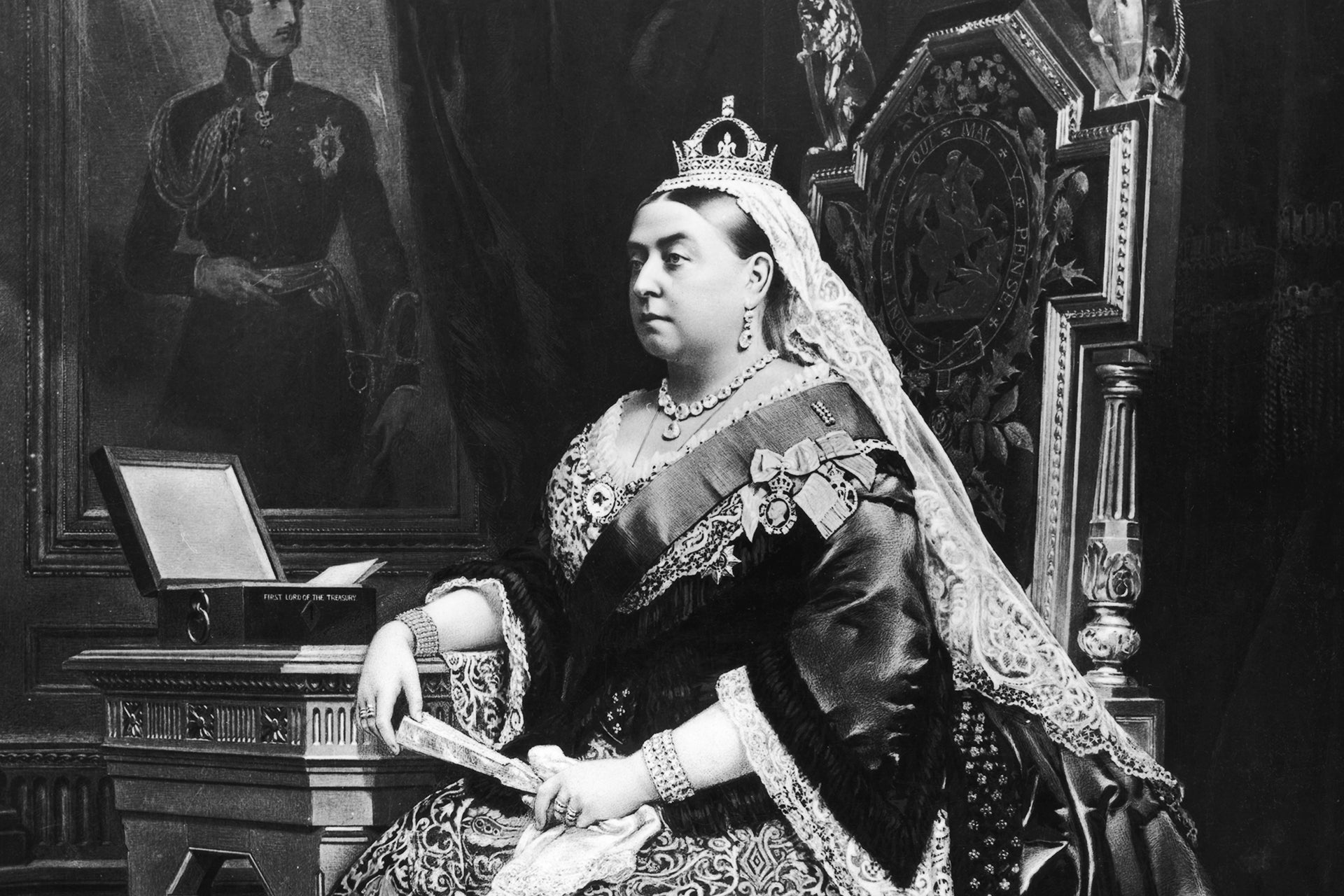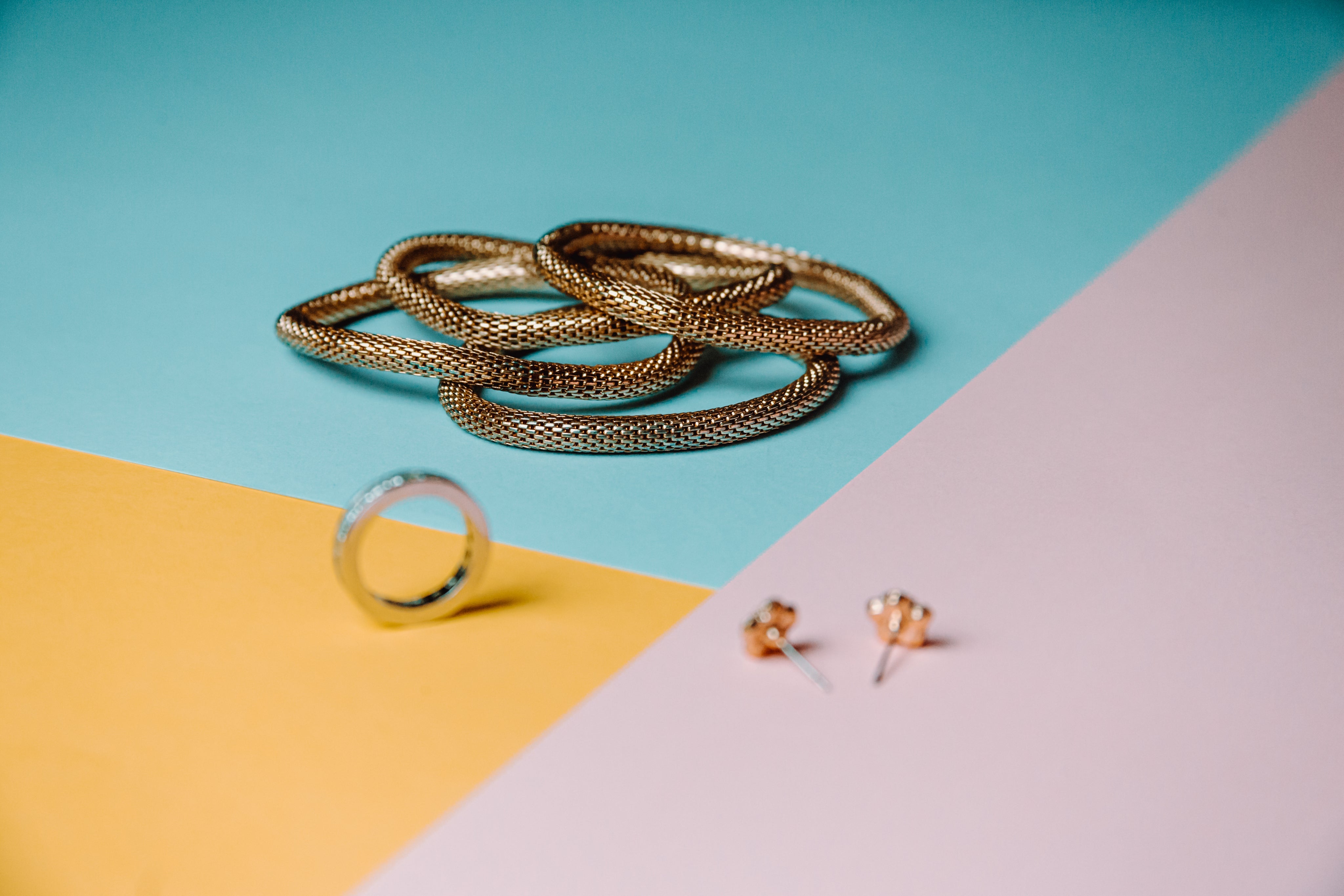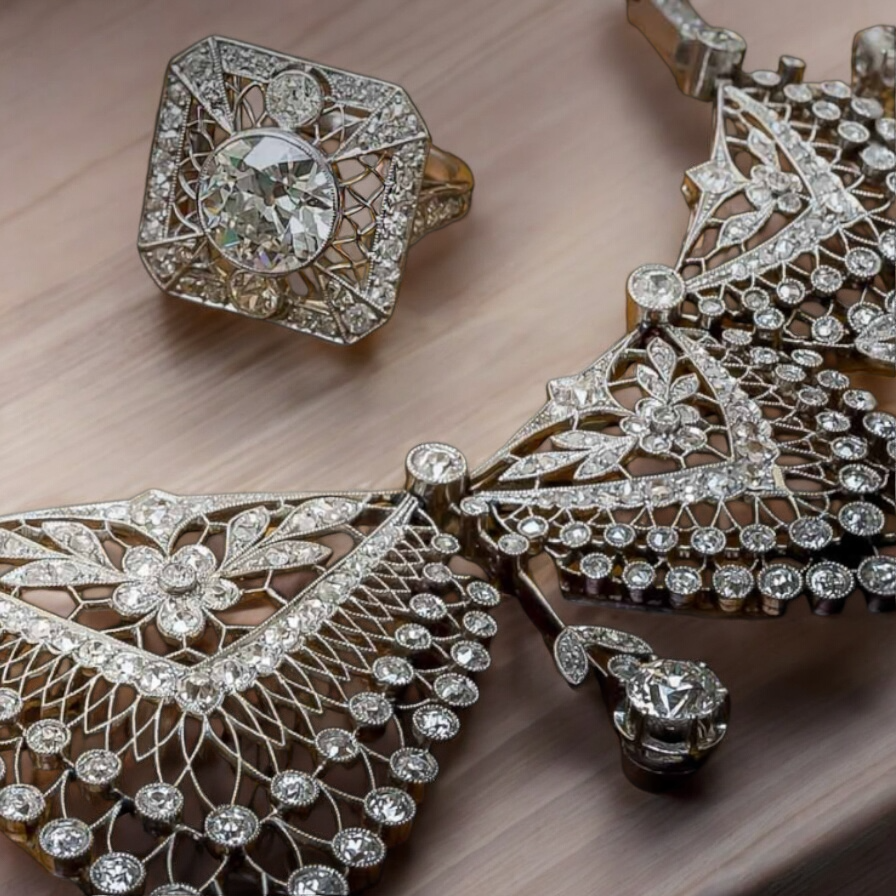
The Victorian Era in Jewelry: A Journey Through Sentiment, Symbolism, and Style
 The Victorian era (1837-1901), named after Queen Victoria of England, was a transformative period for jewelry design. Reflecting the cultural, technological, and social changes of the 19th century, Victorian jewelry is a rich tapestry of sentimentality, symbolism, and exquisite craftsmanship. Each phase of this era—Romantic, Mourning, and Aesthetic—offers a unique glimpse into the values and artistry of the time. Let’s explore this fascinating period in detail.
The Victorian era (1837-1901), named after Queen Victoria of England, was a transformative period for jewelry design. Reflecting the cultural, technological, and social changes of the 19th century, Victorian jewelry is a rich tapestry of sentimentality, symbolism, and exquisite craftsmanship. Each phase of this era—Romantic, Mourning, and Aesthetic—offers a unique glimpse into the values and artistry of the time. Let’s explore this fascinating period in detail.
The Three Phases of Victorian Jewelry
1. The Romantic Period (1837-1861)
This phase coincides with Queen Victoria’s early reign and her marriage to Prince Albert. Jewelry from this period is characterized by its romantic motifs, intricate craftsmanship, and sentimental value.
-
Design Themes:
-
Romantic symbols such as hearts, flowers, bows, and serpents (the latter symbolizing eternal love).
-
Lockets and brooches were particularly popular, often containing hair or miniature portraits of loved ones.
-
Nature-inspired motifs, including ivy leaves (symbolizing fidelity) and acorns (representing strength).
-
-
Materials:
-
Yellow gold was predominant, often accented with turquoise, seed pearls, garnets, and coral.
-
Techniques like repoussé (raised designs) and engraving were widely used.
-
-
Famous Makers and Pieces:
-
Garrard & Co.: The Crown Jeweller of the era, creating bespoke pieces for the royal family.
-
The Albert Brooch: A sapphire and diamond brooch gifted by Prince Albert to Queen Victoria, symbolizing their love.
-
2. The Mourning Period (1861-1880)
The death of Prince Albert in 1861 plunged Queen Victoria into deep mourning, a sentiment that influenced jewelry trends for the next two decades. Mourning jewelry became a way to commemorate lost loved ones and reflect somber emotions.
-
Design Themes:
-
Dark, solemn designs often incorporating motifs like crosses, urns, and weeping willows.
-
Sentimental inscriptions, such as “In Memory Of” or initials of the deceased.
-
-
Materials:
-
Black materials like jet (a fossilized wood) and onyx were prevalent.
-
Hair jewelry, woven from the hair of the deceased, was a deeply personal and popular choice.
-
Gold and enamel were often used, with accents of pearls symbolizing tears.
-
-
Famous Makers and Pieces:
-
Cameo Jewelry by Wedgwood: Featuring white relief designs on black backgrounds, often depicting classical scenes.
-
Queen Victoria’s Jet Brooches: Worn as a symbol of her mourning and widely emulated by the public.
-
3. The Aesthetic Period (1880-1901)
As Queen Victoria’s influence waned, jewelry design shifted towards lighter, more artistic styles. The Aesthetic period celebrated beauty for its own sake, moving away from heavy sentimentality.
-
Design Themes:
-
Delicate, nature-inspired motifs like flowers, birds, and insects.
-
Japanese influences, including cherry blossoms and cranes, reflecting the era’s fascination with Japonisme.
-
Symmetry gave way to more fluid and organic designs.
-
-
Materials:
-
Colored gemstones like sapphires, rubies, and diamonds became prominent.
-
Gold was often textured or combined with silver for contrast.
-
Enameling and intricate metalwork highlighted the craftsmanship.
-
-
Famous Makers and Pieces:
-
Tiffany & Co.: Emerging as a global leader in jewelry design, introducing innovative gemstone cuts and bold styles.
-
Liberty & Co.: Known for delicate silver and enamel pieces that bridged the gap between Victorian and Art Nouveau aesthetics.
-
The Cullinan Diamonds: Discovered in 1905 and later cut into nine stones, some of which became part of the Crown Jewels.
-
Technological and Cultural Influences
-
Industrial Revolution:
-
Mass production made jewelry more accessible, but hand-crafted pieces remained prized for their quality and uniqueness.
-
Techniques like die-stamping and electroplating allowed for intricate designs at lower costs.
-
-
Global Influence:
-
The expansion of the British Empire brought new materials and inspirations, such as Indian emeralds and South African diamonds.
-
Egyptian Revival jewelry, inspired by archaeological discoveries, became fashionable.
-
-
Symbolism:
-
Jewelry often served as a language of emotion, with each gemstone, color, and motif carrying specific meanings. For example, amethysts symbolized sobriety, while forget-me-not flowers represented remembrance.
-
Collecting Victorian Jewelry Today
Victorian jewelry remains highly sought after for its beauty, history, and craftsmanship. Here are some tips for collectors:
-
Identify Authenticity: Look for hallmarks, maker’s marks, and wear consistent with age.
-
Seek Rare Pieces: Mourning jewelry, early Romantic designs, and Aesthetic-period creations are particularly valuable.
-
Condition Matters: Pristine or well-preserved pieces hold higher value, though minor repairs can be acceptable.
-
Provenance: Pieces with documented history or connections to notable figures are especially prized.
Timeless Beauty and Enduring Appeal
The Victorian era’s jewelry is a testament to its time, reflecting the emotions, artistry, and innovations of a dynamic period. Whether it’s a romantic serpent ring, a jet mourning brooch, or an intricately enameled Aesthetic piece, Victorian jewelry continues to captivate collectors and enthusiasts around the world. Owning a piece from this era is like holding a fragment of history—timeless, sentimental, and uniquely beautiful.


Leave a comment
This site is protected by hCaptcha and the hCaptcha Privacy Policy and Terms of Service apply.